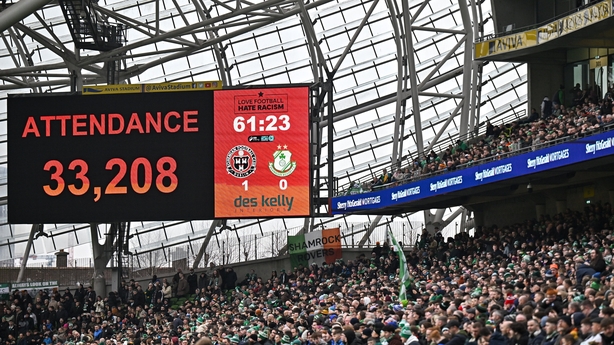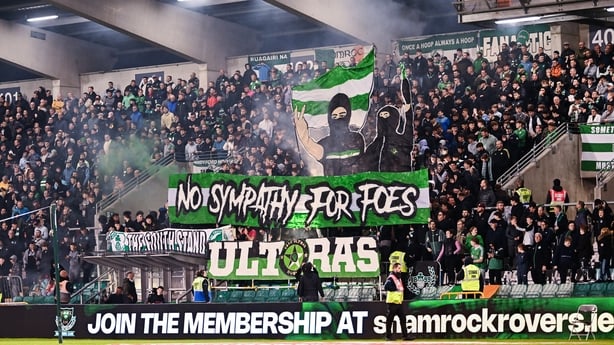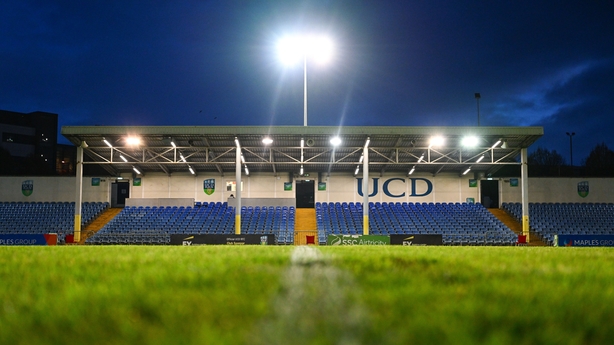Over 33,000 paid into the Aviva Stadium yesterday to see Bohemians beat Shamrock Rovers, breaking the all-time attendance record for the SSE Airtricity League as the good feeling around the domestic game reached new heights.
It follows on from packed houses at Richmond Park, Tolka Park, Turner's Cross and The Showgrounds earlier in the weekend.
This century, we've seen the new Croke Park attract large crowds to GAA, rugby - both international and provincial - and Republic of Ireland soccer matches. Even for smaller games, the Dublin footballers and Leinster Rugby have been able to far surpass the crowds that any League of Ireland fixture could attract.
But it felt like, finally, domestic soccer had arrived yesterday, with the idea of a regular league game drawing more than 10,000 before Covid - never mind 30,000 - being fairly far-fetched.
"I did enjoy it, I'm doing it a while now, but it was just great to be involved," Bohemians manager Alan Reynolds said afterwards.
"When the game started you were just caught up in the game. I'm delighted to be involved in it and I thought it was fantastic. I suppose when you win... even if I hadn't have won, I still would have said it was a great occasion."

These sentiments were echoed by Shamrock Rovers manager Stephen Bradley, adding: "It's another positive step forward for the league. It's brilliant to see 32,000 there for a domestic game.
"Hopefully there's many more of them to come. It shows that if we have the infrastructure, the facilities, we will get the people through the doors.
"It's a positive step for Irish football domestically."
Part of the league's inability to get bums on seats over the years has been to do with the facilities, or lack thereof, that are available to clubs around the country, but yesterday showed that if you put the games on in bigger stadiums, the people will come.
The growing numbers attending FAI Cup finals since they moved the blue riband game to the home of Irish soccer had already hinted at this, but getting the crowd in for a regular league game moves things onto a different plane altogether.
For followers of the domestic game, there's now a justified sense of frustration around the lack of haste with providing bigger venues across the country. The weekend had begun with a delay of an hour while floodlight issues were sorted out at the first home game of defending champions Shelbourne at Tolka Park.
The largest stadium in the league is Tallaght, which can hold just over 10,000, but it's clear that Bohemians are in an era where Dalymount Park is far too small to accommodate their fanbase.
Even the proposed revamp of the Phibsboro venue would only bring the capacity to 8,000 which, on yesterday's evidence, will regularly have its capacity tested.

But the interest in any sport can ebb and flow and the failure to capitalise on the current explosion in interest feels like such a missed opportunity.
"It's a good occasion, it shows what can be, but we've got to be very careful and not run away with ourselves either," Bradley warned.
"As a league [we can't] let people off the hook and think what we have domestically is acceptable; it's not.
"This is great [but] this isn't sustainable, this isn't going to happen every week. We're crying out for facilities across the board, not just us, not just Bohs.
"If we're serious about taking the league forward it has to happen. We've had positive steps, we've had the TV come in, that's a positive step.
"Today shows potential but we've got to be very careful and not take our eye off the ball of what is really needed."
It's disheartening to think that the next Dublin Derby that Bohs host will have nearly 28,000 fewer people in attendance.
Over the weekend, the Bohemians president Matt Devaney told the Irish Independent that 2028 was "optimistic" for the reopening of Dalymount, adding to that sense that some of the momentum might be squandered.
On the other side of the coin, it must be acknowledged that this boom in interest has snuck up fast on the league. In pre-Covid times, fewer than 400,000 were attending games in the top flight across the entire season, but that figure was creeping close to 600,000 last season.
Even allowing for the fact that UCD, with their traditionally low supporter base, were in the top flight in 2019 and they weren't last year, the big increase in punters has put the failure to invest in facilities into sharp focus quickly.

But the clear pent-up demand begs the question, where to next for the League of Ireland? If the next stadium expansion won't be delivered until potentially 2029, what can be done in the interim to make sure the current passing interest turns into proper passion amongst those who might dip a toe this season?
Some have suggested staging more games at Lansdowne Road, although Reynolds sounded a note of caution of the idea that such an occasion could be regularly replicated.
"They need to make sure that they have the following," he said at his post-match press conference.
"It's great if you're here and you have 30,000. I'd like to see every club here, I'm not saying it has to be Bohs and Rovers.
"But I think if clubs are coming you've got the get good numbers supporting it, that would be my take on it."
It's a fair point, you certainly wouldn't get 30,000 if they decided to put a game on at Lansdowne Road each week. Might the RDS be an option when its works are finished for games involving Dublin clubs?
Whatever the solution is, there has to be a way of bridging that gap between the current maximum capacities of grounds at between 4,000 and 5,000, and yesterday's crowd of over 33,000.
There's never been a better time for the League of Ireland to argue its corner.
Listen to the RTÉ Soccer podcast on Apple Podcasts, Spotify or wherever you get your podcasts.


